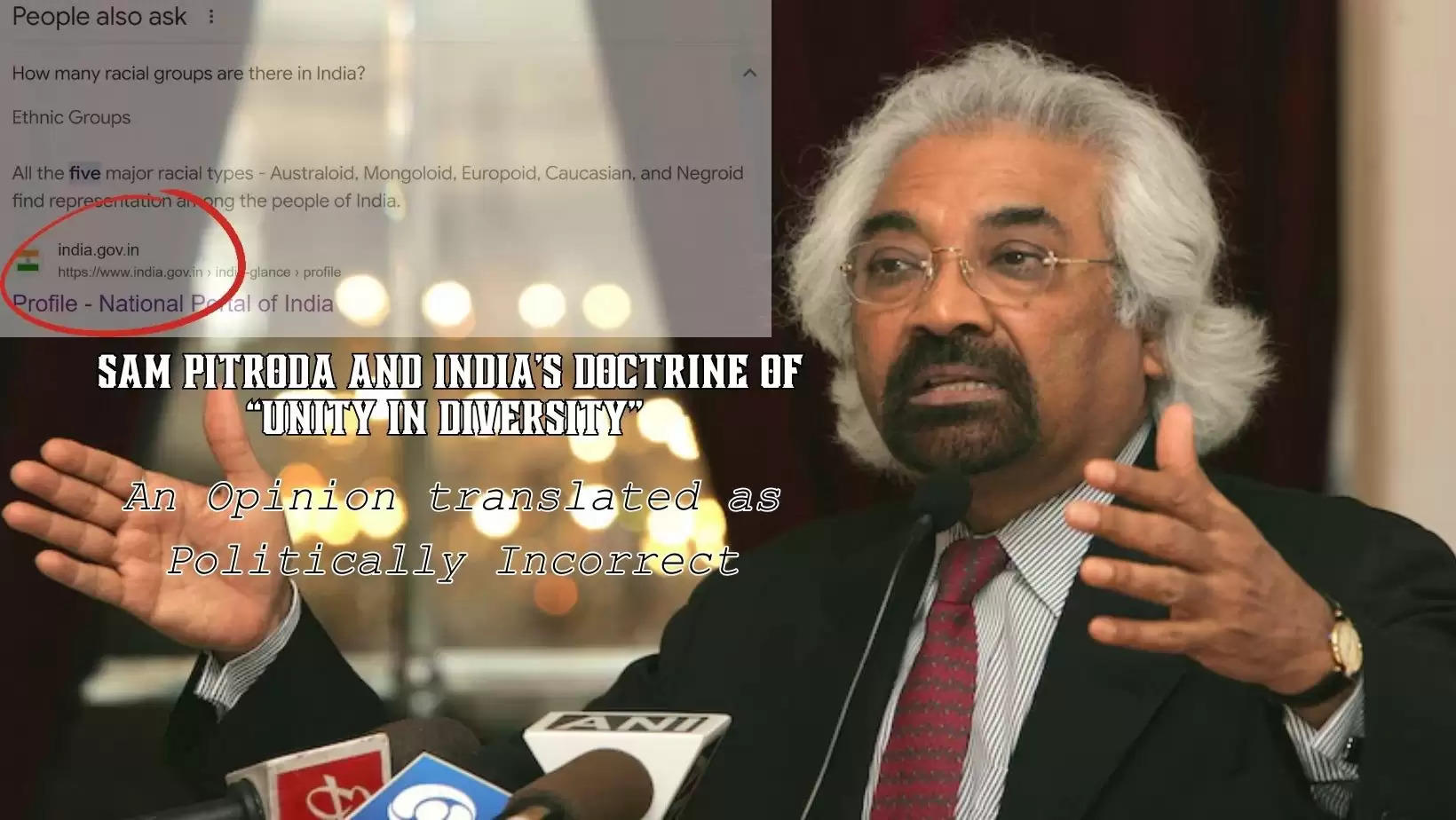Sam Pitroda and India’s Doctrine of “Unity in Diversity”: An Opinion translated as Politically Incorrect
It is apparent that the fallout from Sam Pitroda's remarks underscores the sensitivity surrounding discussions of identity and diversity in the country.
Sam Pitroda, the former Chairman of the Indian Overseas Congress, recently sparked a controversy with his perceived racist remarks that compared Indians living in different parts of the country to Chinese, Arabs, Whites and Africans, while discussing diversity in India.
Pitroda made these remarks during an interview to an English language newspaper, The Statesman, while highlighting diversity of India. Prima facie it appears that Sam Pitroda was trying to highlight the fact that Indian unity in diversity exists not only on cultural basis but it extended to Racial compositions as well.
However, reports from Indian media show that Sam Pitroda’s remarks drew sharp and furious responses from politicos, especially from the Northeast, a few examples being:
These statements of the above-mentioned individuals are based on their respective perceptions, i.e. their ability to notice or understand something, formed by each of them and perhaps many more of our country men.
However, factors that can influence the impressions people form of others, include the characteristics of the person they are observing, the context of the situation, their own personal traits and their past experiences.
An unbiased assessment here is that the honourable commentators named above have formed their impressions about Sam Pitroda’s remarks in a hurry, if not on their respective personal traits in the context of general elections now in progress. The reasons for this assessment are being summarised in succeeding paragraphs.
It is apparent that the fallout from Sam Pitroda's remarks underscores the sensitivity surrounding discussions of identity and diversity in the country.
Let us see what Sam Pitroda had meant while speaking on the diversity of India referring to how people in the South "look like Africans and those in the West look like Arabs and those in the East look like Chinese”, which ignited the volley against the Congress.
Globally Anthropologists classify humans in three major racial groups: Negroid, Caucasoid and Mongoloid, based on common physical features inherited over the centuries. These features include the pigmentation of the skin, hair colour, its form and quantity, shape of the nose, head and face, eyes, stature, finger and palm prints. Perhaps It was a natural curiosity of the anthropologists to club the overall diversity of the mankind in certain groups so that it becomes easier to describe them. See this link for researched information.
- Mongols (Mongoloid) are concentrated in the eastern hemisphere and are spread across China, Japan, Korea, South East Asia and the Indian subcontinent (North East India). The popular term for describing this racial group in India has always been ‘CHINESE’. So if it is said that these Indians look like Chinese, it means a reference to their racial identity and not that their national identity is being doubted. It is rather to highlight the richness of Indian diversity.
- Similarly, the North and Western part of India has a concentration of the Aryan race (Caucasoids). It is historically established that they have migrated from the western hemisphere - mostly from the European and Arab lands. So when some one says that these Indians look like the Caucasoid, these Indians do not become Europeans or Arabs.
- The Racial group Negroids are found in every region of the Globe in the vicinity of the Equator - West Indies, parts of South America, major parts of the African continent and South India, even Sri Lanka. Some of them have even migrated to central India (Bhils, Gond, Oraon, Kadar, Kurumba, Paniyan). They are classified as pre-Dravidians and are the oldest inhabitants of India.
To buttress the above anthropological narrative, a question was put to Google:
Query: "How many racial diversity are there in India"?
The Response was: "The present population of the Indian subcontinent has been divided into four racial groups- the Negritos, the Proto-Australoids, the Mongoloids, and the Mediterranean. The Negritos were the first of the racial groups that came to India." 28 Nov 2015
In conclusion the above analysis shows that:
-
what Sam Pitroda was mentioning in his statements were the words highlighting the fact that in India the diversity of not only cultures but racial too exists as an integral parts of its doctrine of unity in diversity and as an Indian he takes pride in it.
-
His utterances in nation wide electioneering atmosphere prevailing in India, however, were translated by a large part of the political and media galleries as POLITICALLY NOT CORRECT. PERIOD.
To join us on Facebook Click Here and Subscribe to UdaipurTimes Broadcast channels on GoogleNews | Telegram | Signal



